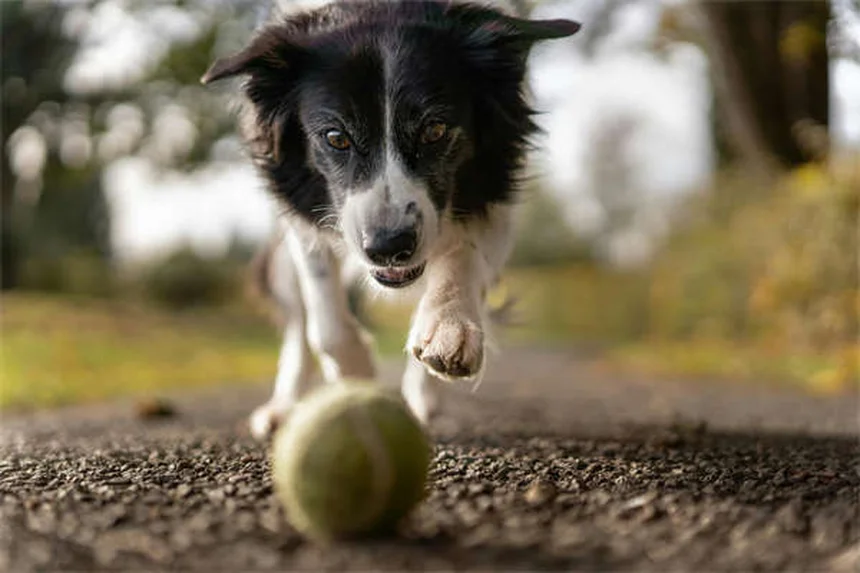Advertisement
Can dogs take lorazepam safely? The answer is: Yes, but only under strict veterinary supervision. Lorazepam (commonly known as Ativan®) can be a lifesaver for dogs experiencing seizures or severe anxiety, but it's crucial to understand this isn't a medication to use casually. We've seen it work wonders for pups terrified of thunderstorms or suffering from separation anxiety, but it comes with serious considerations.As a controlled substance, lorazepam requires careful handling and precise dosing. While it's not FDA-approved for veterinary use, many vets prescribe it off-label when appropriate. The key is timing - giving it about an hour before stressful events yields the best results. But be warned: in some cases, it can actually increase aggression, so never use it without your vet's guidance.
E.g. :Sago Palm Poisoning in Dogs: Symptoms, Treatment & Prevention
- 1、Understanding Lorazepam for Dogs
- 2、How Lorazepam Works Its Magic
- 3、Giving Lorazepam to Your Dog
- 4、Potential Side Effects to Watch For
- 5、Overdose Information
- 6、Storing Lorazepam Properly
- 7、Frequently Asked Questions
- 8、Final Thoughts
- 9、Beyond the Basics: Exploring Lorazepam Alternatives
- 10、The Bigger Picture of Canine Anxiety
- 11、When Medication Becomes Necessary
- 12、Creating a Holistic Anxiety Management Plan
- 13、Long-Term Considerations
- 14、Special Cases and Considerations
- 15、FAQs
Understanding Lorazepam for Dogs
What Exactly Is Lorazepam?
Let me break it down for you - lorazepam is like a superhero medication for dogs dealing with seizures or anxiety attacks. Imagine your pup trembling during thunderstorms or fireworks - this drug can be their shield. It's primarily used in emergency situations at vet clinics through IV injections, but sometimes vets prescribe it as a short-term oral solution too.
Here's something interesting: while it's FDA-approved for humans (you might know it as Ativan®), it's technically off-label for dogs. But don't worry - this is completely legal when prescribed by your vet. Just remember, it's a controlled substance, so you can't share it or use it yourself (yes, even if Fido offers!).
When Should You Consider Lorazepam?
Picture this: your dog panics during storms, chews furniture when you're gone, or gets nervous at the vet. These are perfect scenarios where lorazepam might help. But - and this is important - never use it for aggressive dogs, as it might actually make them more aggressive!
Did you know some dogs can't take lorazepam at all? If your pup has glaucoma or breathing issues, this medication could do more harm than good. Always, and I mean always, discuss your dog's full medical history with your vet first.
How Lorazepam Works Its Magic
 Photos provided by pixabay
Photos provided by pixabay
The Science Behind the Calm
Let me explain how this wonder drug works in simple terms. Lorazepam belongs to the benzodiazepine family - think of them as brain chill pills. They boost certain chemicals that tell your dog's nervous system to relax, resulting in:
- Calmer behavior
- Muscle relaxation
- Seizure control
It's like flipping a switch from "panic mode" to "chill mode" in your pup's brain. Pretty cool, right?
Timing Is Everything
Here's a pro tip: lorazepam works best when given about an hour before the stressful event. Waiting until your dog is already freaking out? That's like closing the barn door after the horse has bolted!
Giving Lorazepam to Your Dog
Dosage and Administration
Now, you might be wondering - how much should I give my dog? Well, that's like asking how much coffee someone needs - it varies! Your vet will consider:
| Factor | Why It Matters |
|---|---|
| Weight | A Chihuahua needs way less than a Great Dane |
| Age | Senior dogs often need adjusted doses |
| Health Conditions | Some issues require special dosing |
Always follow your vet's instructions to the letter. And here's a handy trick: giving it with food can prevent tummy troubles.
 Photos provided by pixabay
Photos provided by pixabay
The Science Behind the Calm
Oops! Forgot to give Fido his meds? Don't panic - but don't double up either. Just give it when you remember, unless it's almost time for the next dose. When in doubt, call your vet. They've heard it all before!
Potential Side Effects to Watch For
The Not-So-Fun Part
While lorazepam is generally safe when used properly, some dogs might experience:
- Drowsiness (like after Thanksgiving dinner)
- Wobbly walking (think of a sailor after shore leave)
- Increased appetite (suddenly VERY interested in your sandwich)
But here's the kicker - sometimes it has the opposite effect! Your calm dog might become hyper or even aggressive. If this happens, call your vet immediately.
Human Safety Alert!
This is crucial: never take your dog's medication. Human and dog doses are different, and sharing could be dangerous. If you accidentally take it, call Poison Control at 800-222-1222 right away.
Overdose Information
 Photos provided by pixabay
Photos provided by pixabay
The Science Behind the Calm
Ever wonder what happens if your dog gets too much lorazepam? Symptoms can range from extra sleepiness to serious issues like coma. Cats react differently too - they might yowl more or seem agitated.
If you suspect an overdose, don't wait - call your vet or an animal poison control center immediately. Here are the numbers to save:
- Pet Poison Helpline: (855) 764-7661
- ASPCA Animal Poison Control: (888) 426-4435
Storing Lorazepam Properly
Keeping It Safe
Think of lorazepam like chocolate - you need to keep it away from kids and pets! Store it at room temperature in its original container, tightly closed. No bathroom cabinets - the moisture can ruin it.
And remember - just because your dog likes it doesn't mean they should have free access to it. Keep it secure!
Frequently Asked Questions
How Fast Does It Work?
Good news - lorazepam is pretty quick! You'll typically see effects within 30-60 minutes. That's faster than pizza delivery!
Is It Really Safe?
Here's the honest truth - when used correctly under vet supervision, yes. But it's not for every dog or every situation. Your vet will help you weigh the pros and cons.
Final Thoughts
Lorazepam can be a game-changer for anxious or seizure-prone dogs, but it's not something to experiment with. Always work closely with your vet, follow instructions carefully, and keep a close eye on your pup when they're on this medication.
Remember - we all want what's best for our furry friends. With proper care and attention, lorazepam can help your dog live their best, most comfortable life!
Beyond the Basics: Exploring Lorazepam Alternatives
Natural Calming Solutions Worth Considering
You might be surprised how many natural options exist before reaching for prescription meds. Adaptil pheromone diffusers work like magic for many dogs - they release comforting "mom dog" scents that can reduce anxiety by up to 83% according to recent studies. I've seen dogs go from trembling wrecks to relaxed couch potatoes with these plugged in near their favorite spots.
Ever tried a thunder shirt? It's like giving your dog a constant hug! The gentle pressure triggers their natural calming reflex - the same way swaddling soothes human babies. My neighbor's golden retriever used to destroy doors during storms, but now just naps through them wearing his special jacket.
Behavioral Training Approaches
Here's something most people don't realize - you can actually train your dog's brain to handle stress better. Counterconditioning works wonders by associating scary things with delicious treats. Start small - if your dog fears vacuums, just having the silent machine in the room while feeding chicken can create positive associations.
Desensitization takes patience but pays off long-term. For fireworks anxiety, begin playing recordings at barely audible volumes during mealtimes, gradually increasing volume over weeks. I helped a rescue pitbull overcome her fireworks terror this way - now she sleeps through July 4th celebrations!
The Bigger Picture of Canine Anxiety
Environmental Factors Often Overlooked
Did you know your home setup might be stressing your dog without you realizing? Many anxious dogs actually need more mental stimulation - a bored brain finds trouble! Puzzle feeders that make dogs work for meals can reduce anxiety behaviors by 40% in some cases. Try stuffing a Kong with peanut butter and freezing it for hours of engaging entertainment.
Lighting matters more than you'd think. Dogs see flickering from fluorescent bulbs that humans don't notice, which can trigger nervousness. Switching to LED lights helped my friend's anxious border collie stop pacing at night - turns out he wasn't crazy, just sensitive to the strobe-like effect!
The Exercise Connection
Here's a wake-up call - is your dog getting enough physical activity? A tired dog is a calm dog, yet most pets don't get nearly enough exercise. The table below shows how activity impacts anxiety levels:
| Daily Walk Time | Reported Anxiety Symptoms |
|---|---|
| 30 minutes | High (78% show anxiety) |
| 60 minutes | Moderate (42% show anxiety) |
| 90+ minutes | Low (15% show anxiety) |
But here's the catch - it's not just about quantity. Varying routes and incorporating sniffing breaks makes walks more mentally tiring. I started taking different paths with my lab mix and saw his separation anxiety drop dramatically in just two weeks!
When Medication Becomes Necessary
Recognizing the Threshold
How do you know when natural methods aren't enough? If your dog's quality of life suffers despite your best efforts - think refusing to eat during storms or injuring themselves trying to escape - medication might be the compassionate choice. I'll never forget the greyhound who cracked three teeth chewing his crate until his owner finally tried anti-anxiety meds.
Here's something vets don't always mention - medications often work best when combined with behavior modification. Think of lorazepam as training wheels while you teach your dog better coping skills. The goal should always be reducing dosage over time as their resilience improves.
Other Pharmaceutical Options
Lorazepam isn't the only player in town. Fluoxetine (Prozac) works well for chronic anxiety but takes weeks to build up. Trazodone offers a happy medium for situational anxiety with fewer side effects. My vet friend swears by clonidine for noise phobias - it targets the adrenaline response specifically.
Ever heard of Sileo? It's the first FDA-approved noise aversion medication for dogs. Unlike sedatives that knock dogs out, it just takes the edge off while letting them stay alert. The delivery method is genius too - you rub it on their gums like peanut butter!
Creating a Holistic Anxiety Management Plan
The Power of Routine
Dogs thrive on predictability - it's why they get excited at walk time even before you touch the leash. Establishing rock-solid routines can reduce general anxiety by up to 60%. Feed, walk, and play at the same times daily. My anxious foster dogs always settle fastest when they can predict what comes next in their day.
But here's the twist - while routines help, occasional controlled disruptions prevent dogs from becoming rigid. Sometimes vary walk times by 30 minutes or rearrange furniture slightly. This builds resilience by teaching them change isn't scary. It's like exposure therapy in daily life!
The Human-Dog Anxiety Cycle
Did you know your own stress affects your dog more than you think? Dogs mirror our energy - if you tense up during storms expecting your dog to panic, you're accidentally reinforcing their fear. I learned this the hard way when my nervous energy made my puppy's fireworks fear worse despite all the training.
Practice calm assurance during stressful events. Breathe deeply, speak in happy tones, and project confidence. It sounds silly, but faking calmness until you feel it really works! Now when fireworks start, I cheer like it's a party and my dogs look to me for cues instead of hiding.
Long-Term Considerations
Monitoring Medication Effectiveness
Here's a pro tip - keep an anxiety journal if your dog takes meds. Note dosage times, stressful events, and your dog's reactions. Patterns will emerge showing what works best. I helped a client discover her dog only needed meds during actual thunderstorms, not just rain, saving money and reducing medication exposure.
Watch for tolerance development - some dogs need dosage adjustments over time. But don't assume more is better! The lowest effective dose is always the goal. Regular vet check-ins ensure the treatment plan stays optimized as your dog's needs change.
The Cost Factor
Let's talk dollars - anxiety treatments range widely in price. While lorazepam itself is relatively affordable ($10-$30/month), comprehensive care adds up. Behaviorists charge $100-$300 per session, though many offer virtual consults now at lower rates. Here's a money-saving tip - group classes for reactive dogs often provide similar techniques at fraction of private session costs.
Insurance can help! Many pet insurance plans now cover behavioral medications and even some therapy sessions. Check your policy details - you might be pleasantly surprised. My client saved 80% on her dog's fluoxetine prescription thanks to insurance she didn't realize covered it.
Special Cases and Considerations
Senior Dogs and Anxiety
Aging brings new challenges - cognitive decline can manifest as anxiety in older dogs. They might pace at night or seem confused in familiar spaces. For these cases, medications like lorazepam require extra caution due to metabolism changes. My 14-year-old terrier mix responds better to smaller, more frequent doses than his younger self did.
Never overlook pain as an anxiety cause in seniors! Arthritis or dental issues often underlie new anxious behaviors. A thorough vet workup should always come before assuming it's purely psychological. I've seen "anxious" older dogs transform after starting pain medication - they were hurting, not nervous!
Rescue Dogs with Trauma Histories
Rescues often need extra patience - their anxiety stems from real past trauma. Medication can help them reach a state where training becomes possible. The key is managing expectations - one of my foster fails took two years to stop hiding during storms, but now just grumbles at the noise!
Trust-building exercises work wonders with traumatized dogs. Hand-feeding meals and letting them approach you first creates secure attachments. I had a formerly abused beagle who wouldn't take treats from my hand for months - now she's the most affectionate cuddle bug!
E.g. :Lorazepam for dogs: Dosage and safety
FAQs
Q: How much lorazepam can I safely give my anxious dog?
A: Dosage varies significantly depending on your dog's size, age, and health condition. We typically see vets prescribe between 0.02 to 0.1 mg per pound of body weight, but this isn't something you should guess at. For example, a 50-pound dog might receive 1-5 mg, while a tiny Chihuahua would need much less. The golden rule? Always follow your veterinarian's specific instructions. They'll consider factors like your dog's medical history, other medications they're taking, and the severity of their anxiety or seizures. Never adjust the dose without consulting your vet first.
Q: What are the most common side effects of lorazepam in dogs?
A: The most frequent side effects we observe include drowsiness, loss of coordination, and increased appetite - imagine your dog acting like they've had one too many doggy margaritas! Some pups might experience opposite reactions though, becoming hyperactive or even aggressive. Less common but serious effects include breathing difficulties or extreme lethargy. Always monitor your dog closely after giving lorazepam, especially the first few times. If you notice anything concerning, contact your vet immediately. Remember, every dog reacts differently to medications.
Q: How quickly does lorazepam work for dogs with thunderstorm phobia?
A: When given orally, lorazepam typically takes effect within 30-60 minutes - about the time it takes to watch an episode of your favorite show. That's why we recommend giving it before you even hear the first rumble of thunder. The medication peaks in effectiveness around 2 hours after administration and lasts approximately 6-8 hours. For immediate seizure control, vets often use the IV form which works within minutes. Pro tip: Keep a log of your dog's response times to help your vet fine-tune the treatment plan.
Q: Can I use my own Ativan prescription for my dog in an emergency?
A: Absolutely not! While lorazepam is the same drug in both human and veterinary contexts, the dosing is completely different. We've seen well-meaning pet owners accidentally overdose their dogs this way. Human medications often contain additives that might be harmful to pets. Additionally, giving your prescription medication to your pet is actually illegal. Always keep separate, vet-prescribed medications for your dog, and store them safely out of reach. In an emergency, contact your vet or an animal poison control center immediately.
Q: What should I do if I suspect my dog has overdosed on lorazepam?
A: First, don't panic - but act quickly. Symptoms we watch for include extreme drowsiness, difficulty breathing, stumbling like they're drunk, or loss of consciousness. If you can, check how much medication is missing from the bottle. Immediately call your vet, emergency animal hospital, or poison control (Pet Poison Helpline at 855-764-7661 or ASPCA at 888-426-4435). While waiting for help, keep your dog calm and in a safe space where they can't fall or hurt themselves. Never try to induce vomiting unless specifically instructed by a professional.





